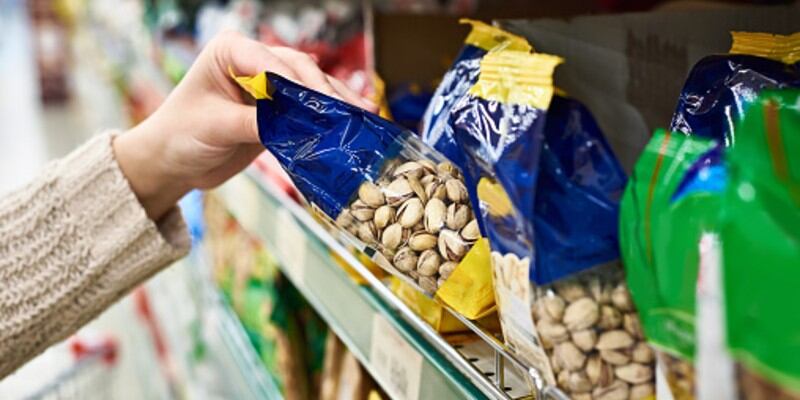Earlier this year, research from the Nanyang Environment and Water Research Institute (NEWRI) at the Nanyang Technological University (NTU) made headlines when the team revealed that single-use plastic bags can have a lower environmental footprint than single-use paper and multi-use cotton bags in countries with developed waste treatment systems such as Singapore.
In terms of eco-friendliness, plastic bags made from high-density polyethylene plastic (HDPE) - the most commonly used type of grocery plastic bag - was found to be second only to reusable plastic bags made from polypropylene non-woven plastic bags (PNB), but better than options such as cotton and kraft paper bags which are often assumed to be better for the environment.
“This is because we looked at the entire production process and life cycle of the bag, from raw material extraction to make the bag, to production, to transportation, all the way until its disposal,” study head researcher and Director of the NEWRI Residues & Resource Reclamation Centre Assistant Professor Grzegorz Lisak told FoodNavigator-Asia.
"Our main message [was] that re-usable plastic bags are the best option, provided that they are re-used many times - over 50 times to be precise – [but indeed] plastic bags, if treated properly afterwards, are less environmentally detrimental than the other types of bags in the study."
The study looked at five types of bags: HDPE, HPB, kraft paper, cotton woven and biodegradable polymer.
“The global warming potential [was generally found to be] 81, 17 and 16 times higher for kraft paper, cotton woven and biodegradable polymer bags, respectively, when compared to PNB – [HDPE plastic bags fared the best out of these] at 14 times higher,” said the study authors.
“Moreover, kraft paper or cotton woven bags demonstrated the highest negative impacts [in terms of] fossil depletion, freshwater-, marine- and terrestrial-ecotoxicities, human toxicity, acidification and eutrophication potentials.”
The researchers also stressed that these results are only applicable in cities such as Singapore and possible in Tokyo, Hong Kong and Dubai which have good, confined waste management structures that minimise plastic waste leakage.
“Countries with thermal waste management (treatment) can opt for the plastic bag option provided that the leakage of plastic waste into the environment is insignificant,” said Prof Lisak.
Prof Lisak has also confirmed that these findings are not confined to grocery shopping bags, and can also be applied to the plastic food and beverage packaging which most F&B manufacturing firms use to contain, protect and transport their products.
“Yes, the study is extendable to other types of materials including food packaging provided the alternate material options are the same, [and the same] confined waste management [also applies],” he told us.
“[So in Singapore for example], plastic packaging is acceptable, and plastics offer a sufficiently long shelf life to minimise food waste.
“However, in places with high leakage of waste into the natural environment, it is not advisable - shifting towards organic and biodegradable packaging may offer better solutions in such cases. However, the environmental footprint of these might be greater.
“[I would also say to food manufacturers looking to reduce their environmental footprint] that switching to more local food sources and types could help to minimise the environmental footprint and food waste.
“For supermarkets, sourcing [bags] from geographically closer suppliers is also recommended to lower the environmental footprint.”
Partial validation for food companies’ sustainability plans?
The results of this study may also indicate that big food companies that have been focusing more on recycling infrastructural efforts than plastic reduction could actually bon the right track when it comes to sustainability strategies despite having received much flak for refusing to cut down on plastic usage.
One example here is Nestle, which has constantly reiterated its stand that plastic is still crucial for food packaging in Asia, where the firm has faced challenges innovating new packaging material for due to climatic reasons.
“[In Asia’s hot, humid climates], we have to have better barrier properties and also work on the reusable secondary (exterior) packaging aspects,” Nestle CTO Stephen Palzer said.
“[Some of the key purposes of] food packaging, plastic or otherwise, is to protect the food product along its journey to the consumer as well as to ensure food safety and quality, [and] some types of packaging may [achieve this in] certain geographies but not others.”
That said, this discovery only applies to countries with good waste management systems and as mentioned Prof Lisak still recommends ‘organic and biodegradable packaging’ for places with high waste leakage.
So only time will be able to tell whether big food firms’ efforts to build up recycling facilities in countries that do not have such complete systems – such as Indonesia or the Philippines – will be timely enough to solve their sustainability challenges.
Other considerations
When asked about government-imposed plastic bans or charges to reduce plastic usage, Prof Lisak opined that this was very much dependent on the situation.
“In places where the charges are insignificant and consumer behaviour does not change then the attempt might fail to reduce plastic usage,” he said.
“Consumer behaviour, environmental awareness, and economic situations are some of the factors that influence the effectiveness of the measure. [In Singapore, we recommend] the usage of reusable plastic bags to the greatest extent possible.
“Reprocessing single-use plastic bags would also be a good policy goal to cut down on their environmental impact.”
That said, he added that this study was also confined to the five bag types examined, and that more solutions might be found in new packaging innovations, the impacts of which would need to be examined too.
“Our outcome reflects the comparison of the studied five types of the bag materials - If there is a novel/other material option that can replace plastics, it needs to be evaluated as well,” he said.
Study: Life cycle assessment of plastic grocery bags and their alternatives in cities with confined waste management structure: A Singapore case study
Source: Journal of Cleaner Production
Authors: Ahamed, A. et. al.





